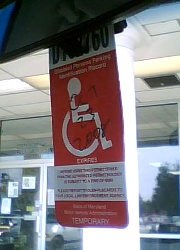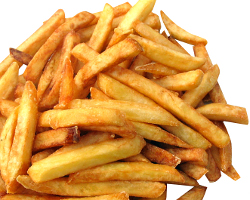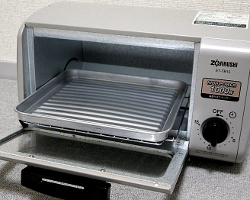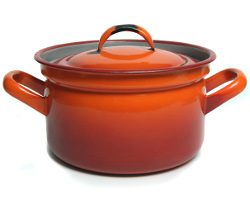 I mentioned in passing on my simple/frugal living blog that we’re having our kitchen ceiling replastered at the moment.
I mentioned in passing on my simple/frugal living blog that we’re having our kitchen ceiling replastered at the moment.
Ahead of the plasterer starting on Monday, we had to tidy off all the work surfaces and tops of cupboards – quite a challenge for hoarders like us with many, many culinary hobbies! Anyway, among our tidying, I found a couple of half-used bags of coffee beans in an old biscuit tin. My boyfriend John bought them from an expensive coffee bean shop but didn’t really like them – he couldn’t bring himself to throw them away though, better to keep them as a back-up just in case he runs out of his preferred ones. That sounds like a good plan, doesn’t it? Except they’ve been waiting in reserve for quite a while now. So long so that I had to search my old email to find out when we went to the place we bought the beans from (Lincoln). 2007. Five years. Gosh.
They do still smell quite coffee-ish but I suspect they’re long, long, long past their prime!
They could go on the compost heap but I’d rather reuse them in some other way rather than just letting them rot.
They could be ground and used in the same way you can reuse any coffee grounds — the magical internet tells me I can use it for dyeing fabric/yarn or even my hair, and I imagine these virgin beans would result in a deeper colour than already used once ones.
But does anyone have any ideas for ways I could use them whole? Crafty ideas or practical ones?
Categories: items
Posted by louisa
on 1 February 2012
 Ages and ages ago on the Suggest An Item page, Carolyn asked about reusing handicap parking tags – but I missed it until Raynor recently comment last week. Sorry – not sure how it slipped by me! Anyway, better late than never, Carolyn asked:
Ages and ages ago on the Suggest An Item page, Carolyn asked about reusing handicap parking tags – but I missed it until Raynor recently comment last week. Sorry – not sure how it slipped by me! Anyway, better late than never, Carolyn asked:
Every two years my husband’s blue handicap tags for the vehicles expire. The county gives him new ones at no cost. What can we do with the expired tags, made of heavy but flexible plastic? They are about 3.5″ x 6.75″ plus another 2.5″ for the hook at the top.
Raynor suggested cutting them into strips and using them as plant markers in the garden/allotment, since they’ll be weather proof.
Philip also had a suggestion: “I’d put them with your tools and they will come in handy sooner or later.” I imagine that’s what we’d do with them too – I always need stuff like that when I’m filler-ing holes before painting. Speaking of painting, last week I was doing some painting-as-art painting rather than DIY and I could have used something like that as a mixing palette (I ended up using some old plastic packaging instead but it was always to hold).
At this time of year, my seed stash is full to bursting and I like to organise it by sowing date – those tags would be just about the right size to use as dividers in my seed box — and would work much better than the too small bits of cardboard I’m using now.
Flat pieces of heavy yet slightly flexible plastic are useful as dough scrappers when baking or doing any similar crafts (like salt dough or even clay pottery) where you need to scrap your material from the worksurface sometimes.
Finally, one more suggestion from me, ask your county/council if they’ll take them back for recycling. Everyone with the tags in the area will be in a similar position and will need to dispose of them some how – depending on the type of plastic, they might find it easier to get them recycled in bulk than someone relying on consumer recycling services.
Any other suggestions? What would you do with them?
Categories: household, items
Posted by louisa
on 30 January 2012
 Mari has emailed asking about leftover chips – as in English chips eaten hot, thick fries not potato chips/crisps – saying her family nearly always have “eyes bigger than their bellies” when they order fish’n’chips and end up with some leftovers:
Mari has emailed asking about leftover chips – as in English chips eaten hot, thick fries not potato chips/crisps – saying her family nearly always have “eyes bigger than their bellies” when they order fish’n’chips and end up with some leftovers:
Good thick chips not just tiny hard scraps. It’s such a waste. Can anything be done with them?
Obviously the first thing here is to reduce the amount she & her family buy in the first place – but I realise chip portions are a variable thing. I read about a study recently that found that portion sizes could vary from between 250g (half a pound) to 1kg (2.2lbs!) depending on the shop and server. I think most families would have leftovers even if they bought just one bag of the latter!
Whenever my father (not) in law has leftover chips, he wraps them back up in their paper again and freezes them for a snack at a later time. I’m not sure how he defrosts/reheats them (and admittedly, he’s not got particularly high standards when it comes to cooking) but it might be worth experimenting with if you have them leftover regularly.
At the end of the day though, they’re just leftover fried potato – and can be reused like any other leftover potato. Mash up the softer ones – they could be used in fish cakes or a hash/bubble & squeak. The little hard ones could be chopped up and used as a crispy coating/topping.
Here, they’d go in our “misc stuff for the chickens” pile.
What would you do with leftover chips?
Categories: food, items
Posted by louisa
on 25 January 2012
 Joel has an old toaster oven and would like ideas on how he can reuse or recycle it:
Joel has an old toaster oven and would like ideas on how he can reuse or recycle it:
My wife just bought a new toaster oven. The previous one had problems in her eyes, because the spring-loaded door didn’t work as smoothly as when new, and the unit, after three years, had a couple unsightliness issues.
The door is not much of a problem, as far as I’m concerned. It does stay shut reliably when you shut it. So, okay, now I’ve got this little heating unit that I can take to my shop. It seems the controls function as-new. Thermostat system works. Heats up to 450* F.
People are using old toaster ovens for flow soldering, for un-soldering components on circuit boards, and for powder-coating of small objects. Right now, I don’t do any of those things… but you never know
Got any other ideas as to how it can come in handy?
Toaster ovens aren’t very common in the UK but they seem to be mini table-top electric ovens – the bread is put on a horizontal tray for toasting but they can be used for other things too (much like any electric oven).
First things first, since it works well, do consider passing it on to someone is less concerned about the door/aesthetic issues — if your local thrift/op/charity shop doesn’t accept electronics, you could pass it onto someone else directly through your local Freecycle/Freegle group.
If that ship has sailed though and it’s needed to be removed from culinary service, it may still be ripe for random crafting reuse. It doesn’t go hot enough for things like clay pottering firing or enamelling (the latter of which is a shame because perhaps he could have fixed Su’s casserole pan… ;) ) but would be fine for the things Joel suggests or other low temperature crafts such as Fimo or the recycled equivalent of Shrinky Dinks (there seems to be a new trend for making pedants from plastic number 6 – (not expanded) polystyrene – cups).
Some gardeners recommend always starting seeds off in a sterile potting mix/seed compost which can be bought or made at home – Alys Fowler recommends a couple of minutes in the microwave or popping it in the oven for an hour at 80C/175F – the toaster oven would work for that.
Any other suggestions for Joel – how he could pass it on or reuse/recycle it for other purposes?
(Photo from Wikipedia)
Categories: household, items, kitchen, technology
Posted by louisa
on 23 January 2012
 Good friend (and bully ;) ) of Recycle This and The Really Good Life Su has emailed with a question:
Good friend (and bully ;) ) of Recycle This and The Really Good Life Su has emailed with a question:
Me again! With an actual, proper reuse question!
My much used enamelled, cast iron casserole dish has died. Proper died, a large section of the enamel has come off the bottom & I dropped the lid on the stone flagged kitchen floor & it broke into 3 pieces!
Me & that casserole have been together a long while & been through many culinary adventures, I know that I could put a plant in it, but wondered if you or anybody else had any idea how I might reuse it?
You might be able to get a replacement lid – I see branded ones popping up on eBay regularly – but I suspect the enamel coming off is the bigger issue. There seem to be a few enamel repair products for chips on ranges or stoves but which wouldn’t be suitable for cookware. Some people on Chowhound recommend continuing to use it if it’s not flaking – the cast iron will eventually season like non-enamelled cast iron – but I could understand other people being unwilling to risk contamination.
Away from cooking, unfortunately the wear to the enamel would stop it being useful as a small dye bath or a soap making pot since the newly exposed iron would react with the dye or raw soap. (The latter is a particular shame as the heavy iron would be useful to help maintain the desired temperature during hot process soap making.)
I can completely understand Su’s desire to keep it around – it’s one of those things that seems like it would be really useful – but I’ll admit to being at a bit of a loss about what I’d do with it, other than for storage (a fun fruit bowl? or for craft bits or knick knacks?) or the planter than Su mentioned.
What would you do with it? How would you reuse or recycle it?
Categories: household, items, kitchen
Posted by louisa
on 20 January 2012
 I mentioned in passing on my simple/frugal living blog that we’re having our kitchen ceiling replastered at the moment.
I mentioned in passing on my simple/frugal living blog that we’re having our kitchen ceiling replastered at the moment.


 Ages and ages ago on the
Ages and ages ago on the  Mari has emailed asking about leftover chips – as in English chips eaten hot, thick fries not potato chips/crisps – saying her family nearly always have “eyes bigger than their bellies” when they order fish’n’chips and end up with some leftovers:
Mari has emailed asking about leftover chips – as in English chips eaten hot, thick fries not potato chips/crisps – saying her family nearly always have “eyes bigger than their bellies” when they order fish’n’chips and end up with some leftovers: Joel has an old toaster oven and would like ideas on how he can reuse or recycle it:
Joel has an old toaster oven and would like ideas on how he can reuse or recycle it: Good friend (and
Good friend (and 














